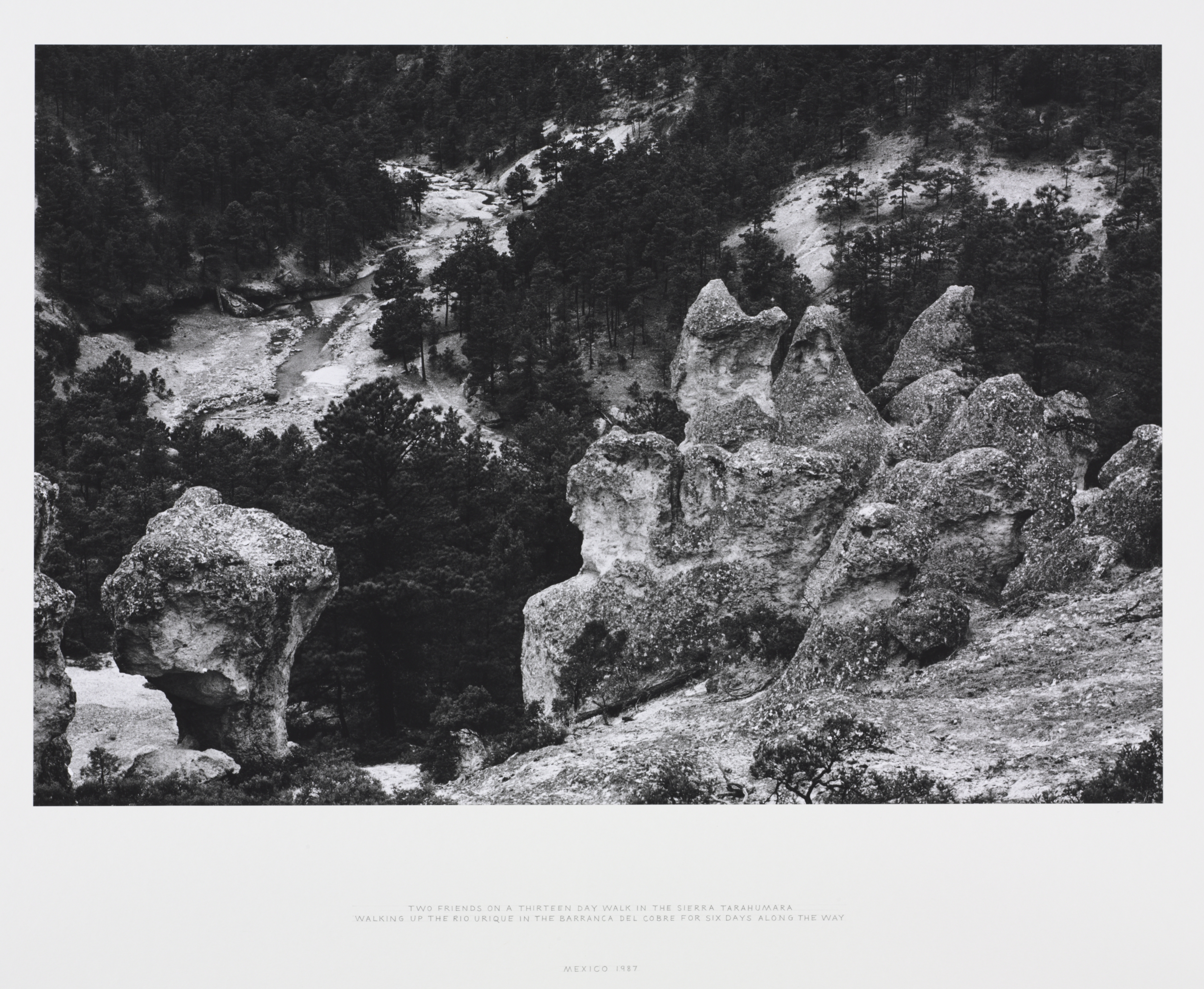The Cleveland Museum of Art
Collection Online as of April 25, 2024

Thirty-Seven Campfires, Mexico (Two friends on a thirteen day walk...)
1987
(British, 1945-)
Image: 48 x 71.1 cm (18 7/8 x 28 in.)
© Artists Right Society (ARS), New York
Location: not on view
Description
Richard Long's photographs are simple and direct, drawing on his perceptions of nature as encountered on long walking trips. His art embodies the essence of his experience, not a visual representation of it, and so it signals a radical departure from traditional landscape depictions. The three prints comprising Thirty-Seven Campfires, Mexico record the wild terrain around the Rio Urique in the Mexican mountain range of Sierra Tarahumara, which Long and a friend explored on a six-day walking tour in 1987.- Edward & Agnes Lee
- Cleveland Museum of Art, Tom E Hinson. Catalogue of Photography. Cleveland, OH: Cleveland Museum of Art, 1996. Mentioned and Reproduced: P. 62, 65, 225
- CMA, November 20,1996 - February 2, 1997: "Legacy of Light: Master Photographs from the Cleveland Museum of Art," see Catalogue of Photography, pp. 62-65.
- {{cite web|title=Thirty-Seven Campfires, Mexico (Two friends on a thirteen day walk...)|url=false|author=Richard Long|year=1987|access-date=25 April 2024|publisher=Cleveland Museum of Art}}
Source URL:
https://www.clevelandart.org/art/1995.30.c